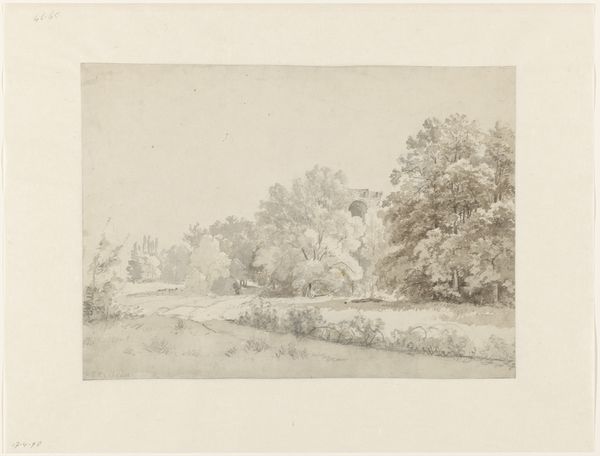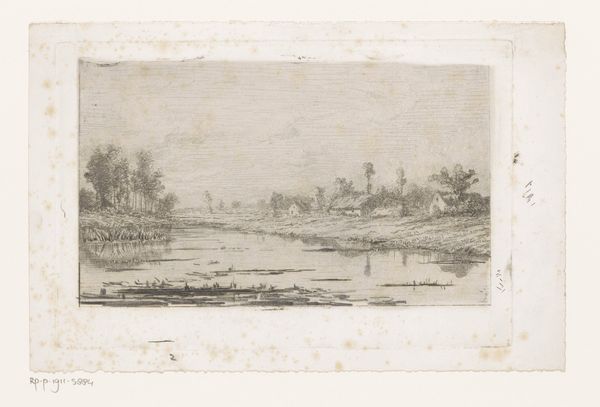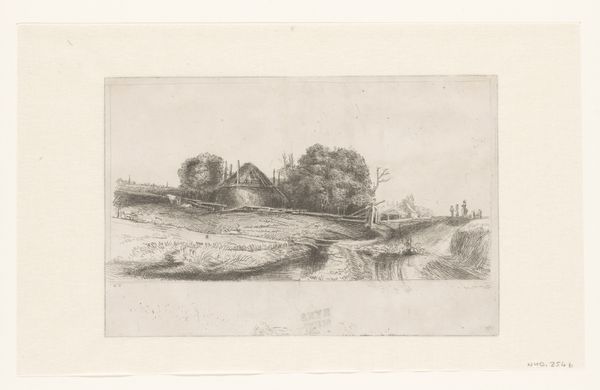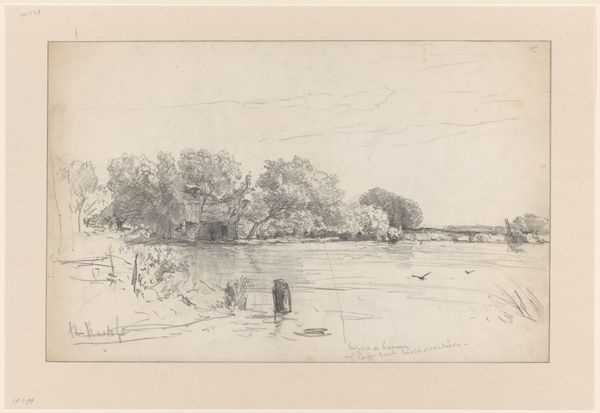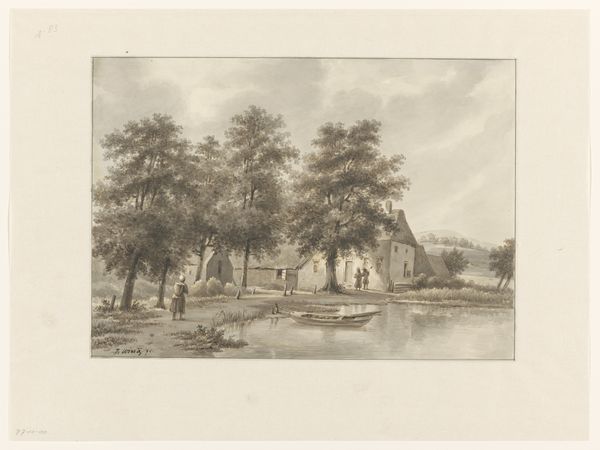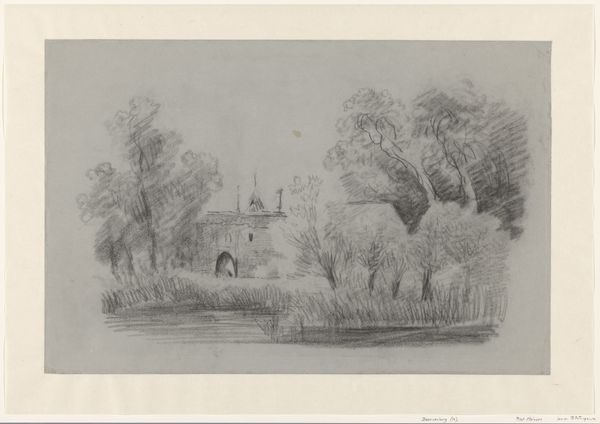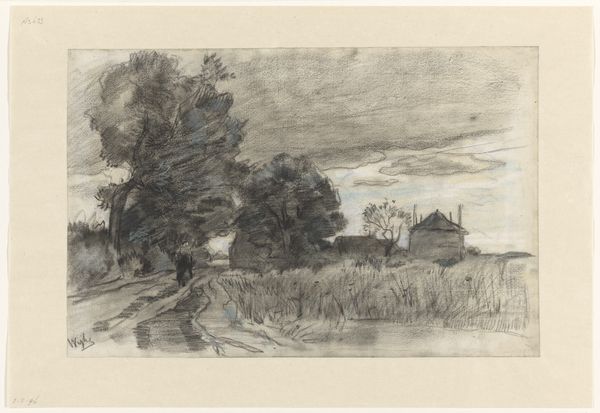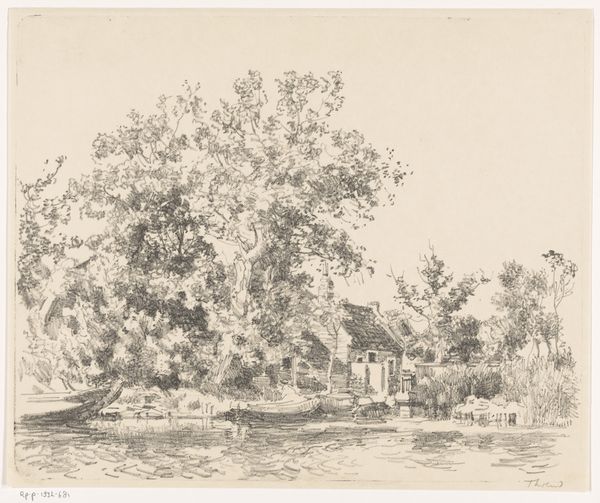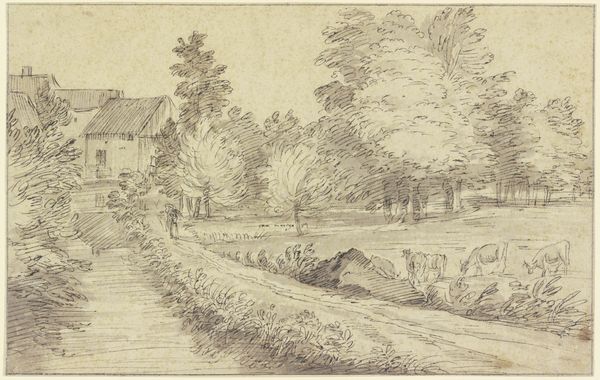
drawing, pencil
#
drawing
#
landscape
#
pencil
#
realism
Dimensions: height 347 mm, width 543 mm
Copyright: Rijks Museum: Open Domain
Curator: Immediately, there's this incredible serenity. It feels muted, a little melancholic even, like a memory half-faded, all in soft grays. Editor: We’re looking at a drawing, “Landschap bij een buiten, op de voorgrond een vijver"—Landscape with a country house, with a pond in the foreground—by Piet Meiners. It was done sometime between 1867 and 1903, and it's now held in the Rijksmuseum collection. He rendered it in pencil. Curator: That pond in the foreground is so arresting. The way he's captured the reflections, those subtle ripples... You can almost hear the quiet lapping of water against the reeds. The entire composition directs the eye towards that secluded house nestled amidst the trees, it looks so incredibly sheltered. Editor: Landscape painting, particularly during the late 19th century in the Netherlands, wasn't just about representing nature; it was deeply intertwined with ideas of national identity and rural life. The increasing urbanization made scenes like these all the more nostalgic, depicting a harmonious existence. Meiners positions this house carefully, framing a specific vision of a society where human presence blends into the natural surrounding rather than dominating. Curator: It makes you wonder about the inhabitants. What kind of life did they lead in that house? Is it a portrait of contentment or quiet isolation? Editor: That's a very poignant reflection! Something to note here is the art market itself. Landscape painting found an eager audience within the bourgeoisie. As urban life was advancing, they liked works that depicted country homes, evoking values rooted in tradition and peace that perhaps felt more and more distant in the realities of the changing modern experience. Curator: True. Art as a commodity but also a vessel, carrying stories, dreams, even longings... I get utterly lost in this one every single time. Thank you for illuminating some of those contexts. Editor: Always. It reminds us to observe these works critically to discern why a certain artistic message has been created and what kind of conversation it seeks to spark with the public.
Comments
No comments
Be the first to comment and join the conversation on the ultimate creative platform.




